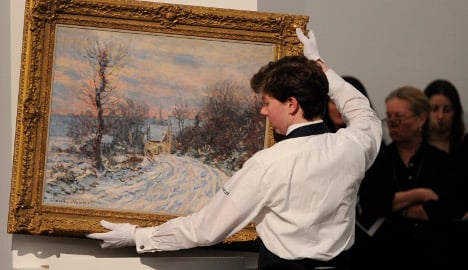One of the paintings is part of the famous "Nymphéas" (Water Lilies) series the French artist painted at Giverny. Forecast to sell for an estimated $30-45 million, this work has been held by a collector since 1955, and has not been seen in public since 1945.
The six Monet works have been in private collections; they are expected to generate a lot of enthusiasm on the auction block at evening sales.
The other works are "Le Palais Ducal" painted in 1908 in Venice; it is expected to fetch $15-20 million; "Bassin aux nymphéas, les rosiers" from $18-25 million; and "Le Chemin d'Epinay, effet de neige" (1875). It is expected to sell for $6-8 million.
In addition, "La Seine à Vétheuil" (1901), is expected to bring in $6-8 million; it has been in private hands since 1955 and has not been sold at auction.
And "Au Val Saint-Nicolas près Dieppe, matin" (1897), could fetch $3-4 million, the auction house said.
These six works by the impressionist will be shown in London April 10-14, before returning to New York where they will be on view through May 1.
Auctioneers Christie's, meanwhile, announced Monday it would sell a Monet work — "Le parlement, soleil couchant" — for an expected $35-45 million on May 11 in New York.
The record for a single Monet was set in June 2008 when Christie's in London sold "Le bassin des Nymphéas" for $80.1 million.
"The six works by Monet that we are privileged to present this May represent exactly what buyers are seeking at this moment: several of his most famous scenes, emerging from prestigious private collections and completely fresh to the market," said Simon Shaw at Sotheby's.
"We're undeniably witnessing an exceptional moment for great works by Monet at Sotheby's. As new generations and new markets rediscover the master, the supply of strong examples remaining in private hands is shrinking fast. The result is fierce competition that leads to the results we have witnessed recently at Sotheby's."



 Please whitelist us to continue reading.
Please whitelist us to continue reading.
Member comments